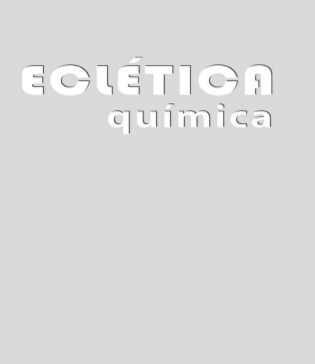Abstract
Palm oil is one of the two most important vegetable oils in the world’s oil and fats market. The extraction and purification processes generate different kinds of waste generally known as palm oil mill effluent (POME). Earlier studies had indicated the possibility of using boiler fly ash to adsorb impurities and colour in POME treatment. The adsorption treatment of POME using boiler fly ash was further investigated in detail in this work with regards to the reduction of BOD, colour and TSS from palm oil mill effluent. The amount of BOD, colour and TSS adsorbed increased as the weight of the boiler fly ash used was increased. Also, the smaller particle size of 425μm adsorbed more than the 850μm size. Attempts were made to fit the experimental data with the Freundlich, Langmuir and Dubinin-Radushkevich isotherms. The R2 values, which ranged from 0.8974–0.9898, 0.8848–0.9824 and 0.6235 0.9101 for Freundlich, Langmuir and Dubinin-Radushkevich isotherms respectively, showed that Freundlich isotherm gave a better fit followed by Langmuir and then Dubinin-Radushkevich isotherm. The sorption trend could be put as BOD > Colour > TSS.
References
R.A. Majid, A.N Ma and E. Hisham, Palm Oil Research
Institute of Malaysia (PORIM) Bulletin, 39, (1999), 1-47.
C.N.S. Hartley, The Oil palm. 3rd Ed. Longman Scientific
and Technical U.K., (1988), pp. 14-17.
B.J. Wood, A. review on current methods of dealing with
palm oil mill Effluent, Malaysia University Press, Kuala Lumpur, (1989), pp. 19-32.
A.N. Ma, Y Tajima, M. Asahi and J. Hannif, Palm Oil Research Institute of Malaysia (PORIM) Technology, 19, (1996), 1-8.
K.L.Hoe and A.M. Dam, System for palm oil mil effluent
Treatment, Ministry of primary industries in Malaysia, (1981), pp. 177-182.
A.M. Rusnani and A.N. Ma, Physical properties of Boiler
fly ash from various palm oil mill. PORIM Bulletin 38, (1999), 14-19.
C.B. Behr-Andres and J.N. Hutzler, Journal of Environmental Engineering, 120 (6), (1994), 1488-1506.
M.A. Hashim, K.H. Chu, R. Chitgupa and A.N. Ma, Adsorption of copper by fly ash obtained from oil palm waste: paper presented at the 6th J.S.PS-VCC Seminar, Kyoto University Kyoto, Japan, 27-28 November, (1996).
A. Mathur and D.C. Rupainwar, Asian Environ. 10(3), (1988) 19-25.
K.K. Panday, G.U.R. Prasad, and V.N. Singh, Water Res.
(17), (1985), 873.
T.T. Theis, and Wirth, J.L. Environ. Sci. and Technol.,
(12) (1977), 1096-1100.
C.H. Weng and C.H. Huang, Journal of Environmental
Engineering, 120 (6), (1994), 1470-1487.
J.C. Santamarina, Klein; Y.H. Wang and E. Prencke, Can.
Geotech. J. 39, (2002), 233-241.
J.C. Igwe. Treatment of palm oil mill Effluent (POME)
using Boiler fly ash. M.Eng. Thesis, Department of Civil and
Environmental Engineering, University of Port Harcourt, River State Nigeria, (2008), pp. 1-163.
APHA, Standard methods for the Examination of water
and wastewater. 16th Edition. American Public Health Association, Washington D.C, (1985).
C.M.A. Ademoroti, Standard methods for Water and
Effluents Analysis. Foludex Press Ltd. Ibadan, (1996), pp 44-
S. Gang and S. Weixing. Ind. Eng. Chem. Res., 37(4),
(1998), 1324-1328.
A.A. Abia, and E.D. Asuquo. Afr. J. Biotechnol., 5(16),
(2006), 1475-1482.
R. Qadeer and S. Akhtar. Turk. J. Chem., 29, (2005), 95-
W.J. Moore. Basic Physical Chemistry. Prentice-Hall Inc. Eagle Wood U.S.A, (1986), p. 319.
Motoyuki, S. Adsorption Engineering, Elsevier Sci. Publishers, (1990), pp. 5-61
T. Hsisheng and H. Chien-To. Ind. Eng. Chem. Res.,
(9), (1998), 3618-3624.
A. Akgerman and M. Zardkoohi. J. Chem. Eng. Data, 41,
(1996), 185-191.
I. Langmuir. J. Am. Chem. Soc. 38, (1916), 2221.
C.A. Eligwe, C.I.A. Nwoko and U.U. Egereonu. J. Chem. Soc. Nig., 24, (1999), 70-76.
N. Ahalya, R.D. Kanamadi and T.V. Ramachandra.
Electronic J. Biotechnol., 8(3), (2005), 258-264.
M. Horsfall Jnr; A.I. Spiff and A.A. Abia. Korean Chem.
Soc., 25(7), (2004), 969-976.
A. Sari, M Tuzen, O. D.Uluozlu and M. Soylak. Biochem.
Eng. J., 37, (2007), 151-158.
L. Fu, J. Wang, H Lu, Y. Su and A. Ren. J. Hazard. Matter, 151, (2008), 851-854.

This work is licensed under a Creative Commons Attribution 4.0 International License.
Copyright (c) 2018 Eclética Química Journal




